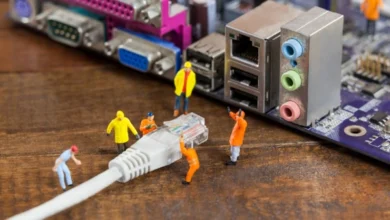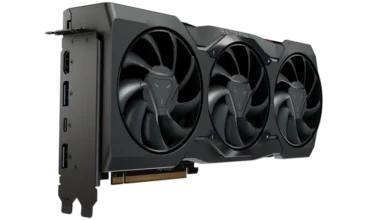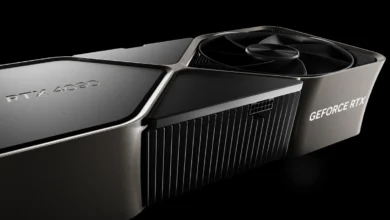Forget Fiber, Copper Wires Can Be Made To Support 3 Gbps
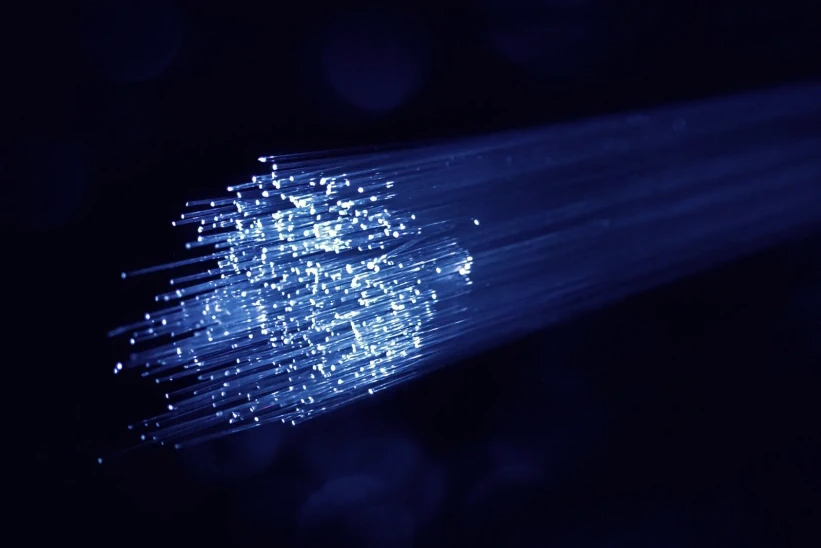
Not many have looked at the possibility of running the twisted copper telephone wires on higher frequency. New research suggests it’s very much possible to do so.
Years ago, internet as we know it used to run on dial-up connections going through previously laid copper wires.
Connecting to the internet on dial-up was neither quick nor easy. One had to dial a special number of their internet service provider (ISP) to connect to the internet.
Depending on the telephone line quality, the number of users on the network and the quality of equipments the service provider used, it could take minutes to get connected to the internet.
Even after connecting, stable connection wasn’t guaranteed. If the telephone line had any disturbance, it could get disconnected very easily.
Mind you, the telephone line disturbance problem could originate from anywhere.
From bad wires on service provider’s buildings, to wires inside the road going bad due to rainwater seeping into them, to the telephone box outside one’s house going bad, to a simple wiring problem inside the user’s house. Any problem in any wiring could cause noise and disturbances in the line and cause the internet to disconnect easily.
Also, if someone called on your telephone, then forget about it. Immediate disconnection. Try to reconnect and go through the same procedure again.
All this lasted till a new technology in the world of internet connections came. That technology was known as DSL.
DSL became common
DSL and its upgraded version ADSL ran on the same copper telephone wires. However, depending on the technology one’s ISP used, it didn’t necessarily need a person to dial the ISP as the internet connection was ideally always connected. It however, needed an external modem to be able to transmit the data through the internet.
Compared to dial-up, DSL also provided higher internet speeds. Due to all that, slowly DSL replaced dial-up almost everywhere. Especially in commonwealth countries, who picked up DSL instead of cable internet.
However, DSL too suffers from some of the connection stability problems which dial-up did. This was because it too ran on the outdated copper telephone wires installed decades or a century ago.
The DSL internet isn’t necessarily stable. It could get disconnected frequently. Takes time to reconnect again. All due to the line quality. Its speeds too are limited depending on how far one stays from their internet service provider.
Really, the younger generations on their mobile internet have no idea what some of us faced just to connect to the internet.
This continued till fiber internet came.
Rise of fiber internet
Fiber internet is a relatively newer player in the world of internet connectivity. It sends information using light, hence it’s extremely quick. It also doesn’t get disconnected easily, unless the wire gets cut somehow or the ISP’s equipment breaks. Fiber has been a huge level up in the field of internet.
So as fiber optics internet has started becoming more and more common in households and businesses, it has given a huge boost to the average internet speeds worldwide.
However, the question is. Is fiber everywhere. Is it even possible to lay it everywhere. The answer is simply no. Unlike the copper wires that are basically installed in most corners of the world, fiber isn’t found everywhere. Installing fiber optics cables is an expensive process and not found everywhere.
DSL coverage
Many countries in the world still rely on aged DSL connection. There are many parts of the world where fiber hasn’t reached and likely might not reach for a very long time.
As per the June 2021 report by OECD (Organisation for Economic Co-operation and Development, a France based organisation), a huge part of Europe – forget about the rest of the world, is still using DSL internet. Countries like Greece, United Kingdom, Germany and Turkey are still heavily reliant on DSL internet.
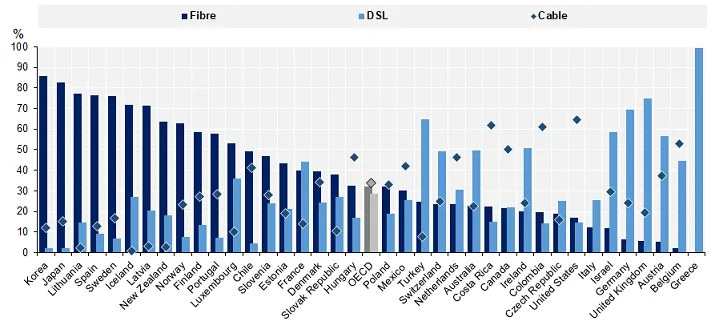
Not only that, this list includes only countries part of OECD. Imagine the countries which are not as rich or as well connected as above.
Yes, mobile internet exists, but that too depends on how far the mobile towers are and 5G like speeds are not available or affordable everywhere.
So would it be fair that we let a huge part of the world suffer with the slow speeds of DSL, which almost never goes above 100 Mbps, till the fiber internet reaches them years or even decades later.
Surely we need some sort of innovation in the copper based internet too. Looks like there’s a good possibility that we have found one.
Innovative research on copper based telephone wires
As per New Scientist, researchers at University of Cambridge have made new findings mentioned in their peer-reviewed research paper published at the Nature Communications.
As per them, since the time Alexander Graham Bell invented these telephone cables, no one actually looked at the theoretical limits of these copper wires.
The researchers say that till now, telephone wires ran below 1 GHz of electrical current. This limited the ability of these wires to transmit data at higher speeds, as no one looked above the 1 GHz range.
They then went onto test telephone wires at various electric currents and what they found was that twisted telephone wires are theoretically very capable of reaching up to 5 GHz without affecting its quality till that range. They said the above can be easily done with a type of a cheap electrical transformer called balun.
Ergin Dinc, the project lead, says that five-fold increase in current might not translate into five-fold increase in speeds, but it’s very much possible for the telephone wires to be able to reach theoretical speeds of 3 Gbps.
The research paper then also suggests that when combined with emerging technologies like G.fast and MGFAST, both of which run below 1 GHz until now, this can give speeds well above 10 Gbps. Remember we are talking about twisted copper telephone lines.
Future of copper and fiber internet
Alexander Graham Bell would have never imagined what his innovation can be used for and what limits it can reach. This research shows there’s still a lot left in the humble twisted copper telephone wire.
Fiber internet has surely given a huge upgrade and is always welcomed. It is also slowly replacing DSL and other forms of wired connections.
But when fiber is not possible to reach, either due to technical problems or financial costs, this innovation, if implemented, can of a huge help to those still on telephone line based internet.
